Ocean City Leads the Way in Tournament Techniques and Tactics
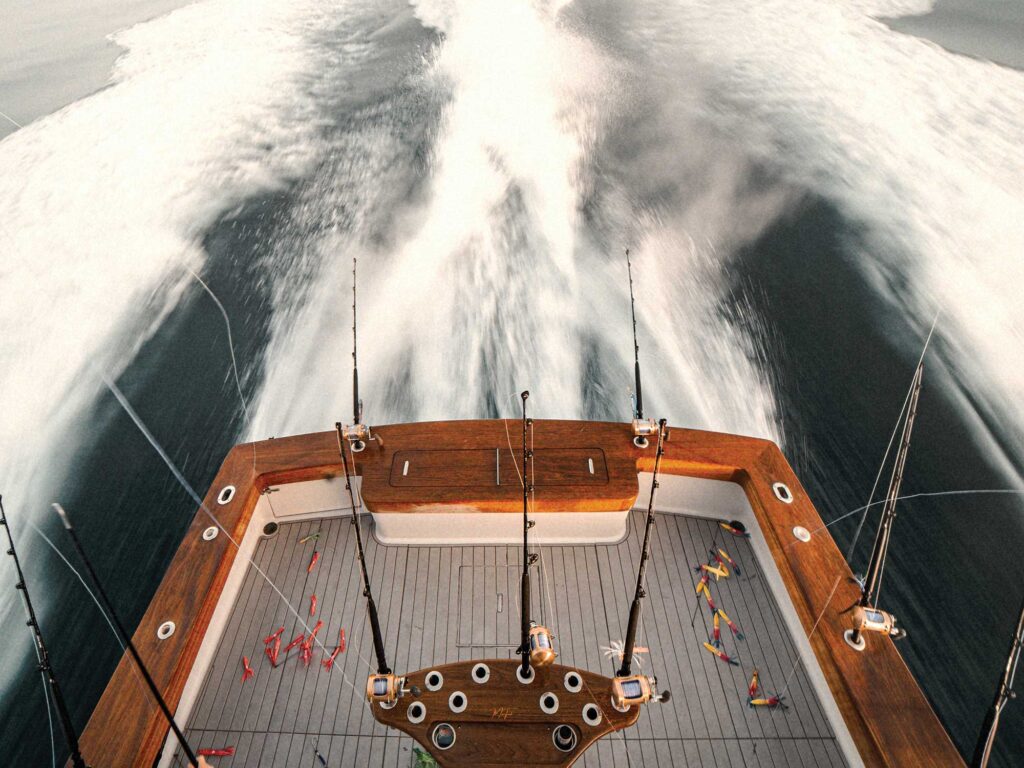 Ocean City is home to some of the most competitive tournament fishing in the world.
Marcus Pyne
Ocean City is home to some of the most competitive tournament fishing in the world.
Marcus Pyne
Yes, there is the well-earned reputation of being the “White Marlin Capital of the World,” hosting the world’s largest, highest-paying billfish tournament, and having a sport-fishing infrastructure as good as any you’ll find on the East Coast. But more than that, Ocean City, Maryland, has mystique. What happens in Ocean City—the crews that fish here, the techniques perfected on these waters—influences tournament fishing the world over.
There is perhaps no person more qualified to provide perspective on this nearly century-old resort town than Capt. Jon Duffie. Duffie grew up fishing in Ocean City with his brother, Jeremy, and their parents. The Duffie brothers cut their teeth in the Ocean City Fishing Center in the early ’90s in the cockpits of some of OC’s best captains.
Duffie came of age running the family’s boat, Billfisher. The operation is the stuff of fishing lore: setting white marlin release records in Ocean City, winning tournaments all over the world, catching a 1,135-pound blue marlin at the 2021 MidAtlantic. The next year, Duffie and his crew won the White Marlin Open after 20 years of competing.
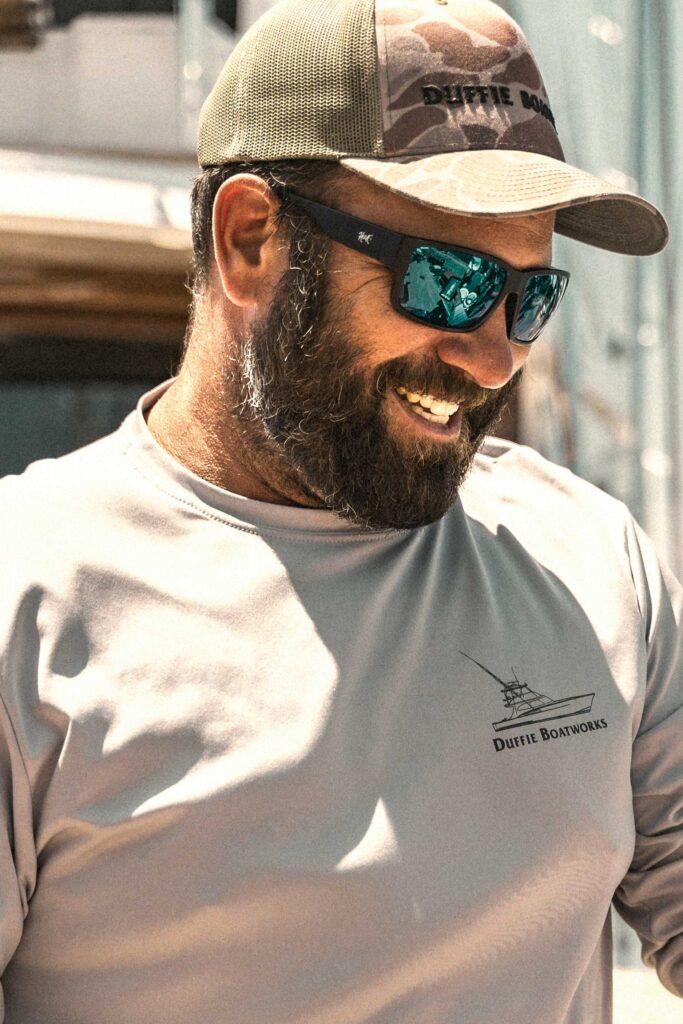 Capt. Jon Duffie.
Marcus Pyne
Capt. Jon Duffie.
Marcus Pyne
These days, in addition to tournament fishing, Duffie translates his passion and knowledge for running sport-fishers into building them. He is the principal behind Duffie Boatworks, which is transforming Ocean City into an emergent hub of custom boatbuilding.
“We have perhaps the most competitive tournament fishing in the world. The White Marlin Open and the MidAtlantic are out of Ocean City and Cape May, New Jersey. There are very few places where you can fish against 400 boats and possibly win $6 million,” Duffie says. “For me, there’s nothing better than when you turn at the sea buoy and see the Ferris wheel, boardwalk, and all of the people watching the boats come in. I don’t think there’s another inlet in the world with the draw of Ocean City.
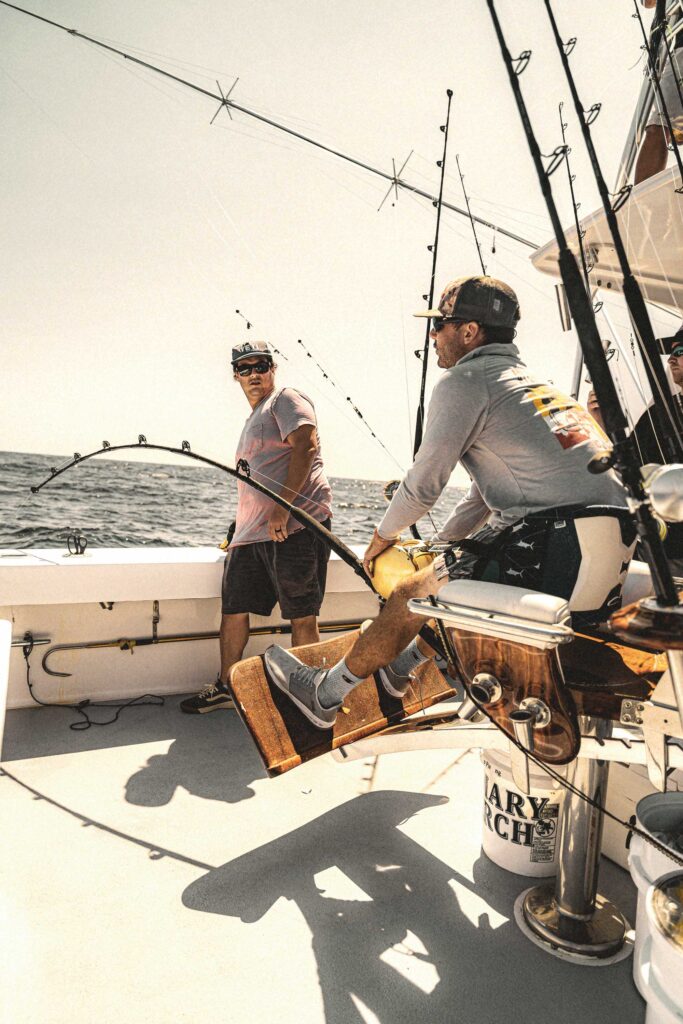 Hooked into a 400-pound blue marlin.
Marcus Pyne
Hooked into a 400-pound blue marlin.
Marcus Pyne
“Many take what they learn here to other places, and so Ocean City has influenced sport fishing around the world.”
With the opening of the Chesapeake Bay Bridge in 1952, and the influx of road trippers from Baltimore and Washington, D.C., Ocean City became a summer getaway. Over the past 30 years, Ocean City has evolved from quiet shoulder seasons to something of a year-round attraction for tourists of all ilks. Scott Lennox owns Fish In OC, a media hub that serves all things fishing tourism. Lennox and Fish In OC have enjoyed a front-row seat to the transformation.
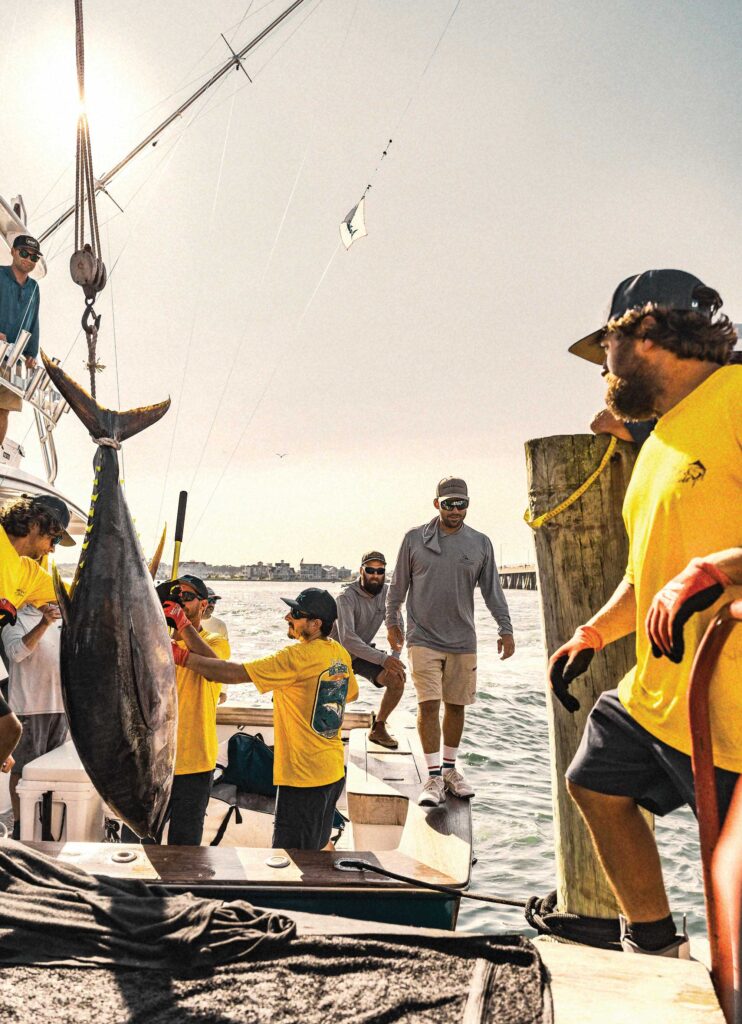 The winning tuna of the 2024 Huk Big Fish Classic.
Marcus Pyne
The winning tuna of the 2024 Huk Big Fish Classic.
Marcus Pyne
“I started in Ocean City in the early ’90s. We had busy summers, but it was slow enough after October that all of the stoplights blinked,” Lennox recalls. “In the early 2000s, Sunset Marina was built. That added 200 slips or so, plus a dry stack. That really increased the number of slips and fishing access. Ocean City has grown exponentially since then.”
Home to the White Marlin Open, the full-service Sunset Marina has become a destination in and of itself. The Ocean City Marlin Club—an institution that’s been keeping catch records since the 1930s—is right across the street.
Capt. Austin Ensor owns and operates Primary Search Sportfishing. His 54-foot Taylor Made is based out of Sunset Marina. Ensor puts charter clients on the incredible array of offshore targets.
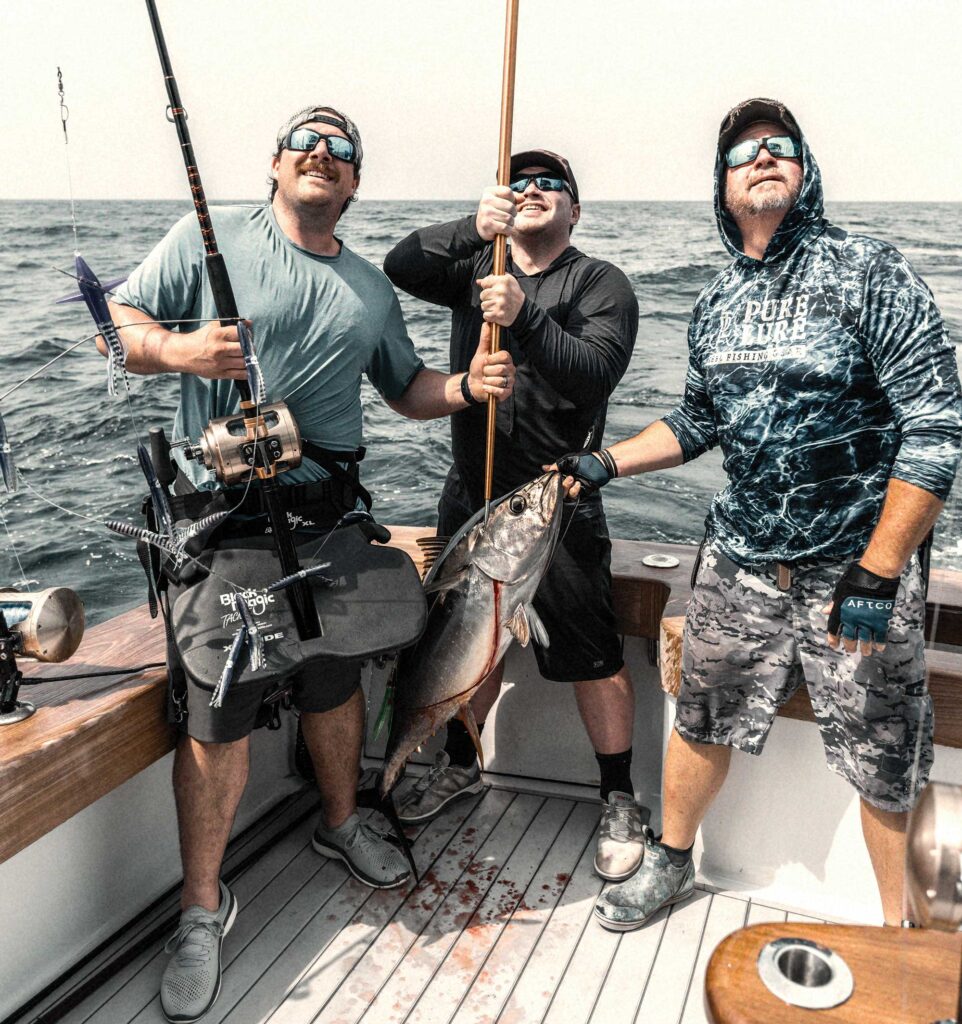 Yellowfin tuna on deck.
Marcus Pyne
Yellowfin tuna on deck.
Marcus Pyne
“There’s diversity on any budget. Whether you have $40 or $4,000, there’s some fishing for you,” Ensor explains. His typical year follows the fishing calendar. “In May and June, we’re trolling for tuna. Trips run 12 to 16 hours, targeting yellowfin. There’s always a chance for a bigeye too.” Most charter boats limit themselves to 12 tuna per boat per day. Twelve yellowfins with an average of 30 to 50 pounds is about as good as it gets.
“In July, the mahi show up, and the bigeye come to the canyons in better numbers. By mid-July, the billfish come to the canyons,” Ensor says. Ocean City is blessed by proximity to some of the most productive bottom on the East Coast. From Sunset Marina, Poor Man’s Canyon is around 54 nautical miles. Baltimore Canyon is about 56, and Norfolk Canyon is in the neighborhood of 76 nautical miles. Washington Canyon is also productive and accessible.
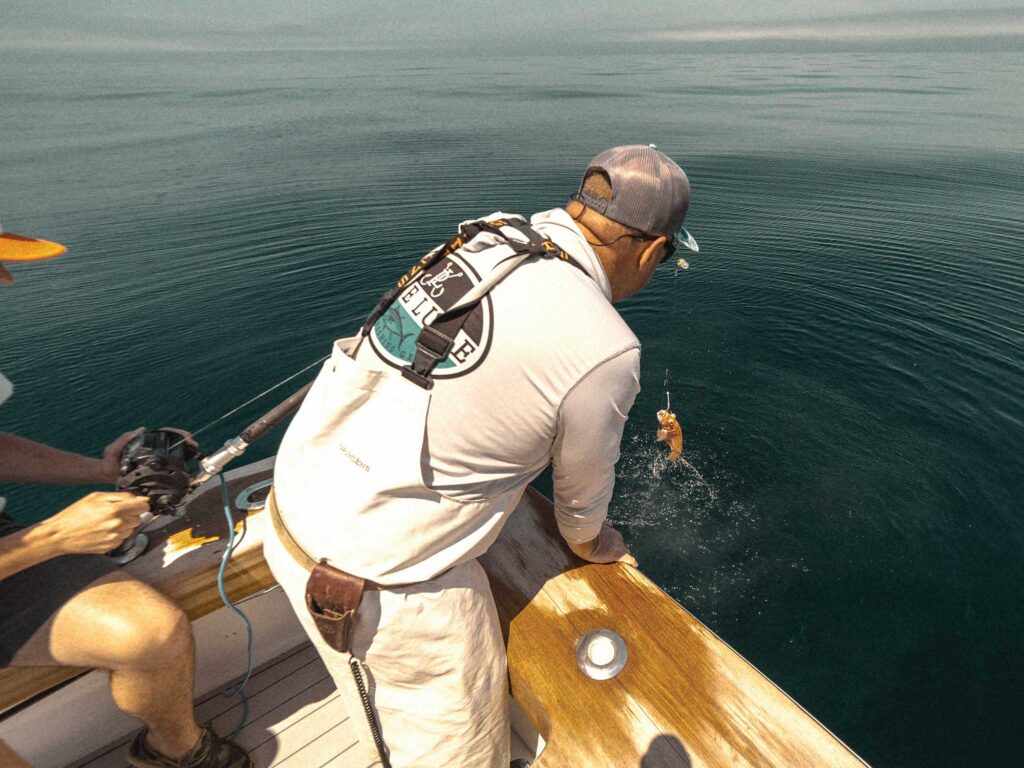 Bottomfishing is popular.
Marcus Pyne
Bottomfishing is popular.
Marcus Pyne
“Most years, the first billfish—a white or blue marlin—is caught in June by someone who is fishing for tuna,” Ensor explains. “In July, the whites show up, then the blues. In August, 80 percent of Ocean City is marlin fishing.”
A really good day white marlin fishing is catching 10. “The Primary Search’s best day in 2024 was 14 whites and a blue marlin,” Ensor explains. “The average Ocean City blue marlin runs between 250 and 300 pounds. The top boat in a year might catch 10 blue marlin in a season. In terms of billfish release numbers in a season, 25 is good for someone starting out, 50 is really great, and 100 is elite.” The Ocean City Marlin Club has awards for boats that release these numbers.
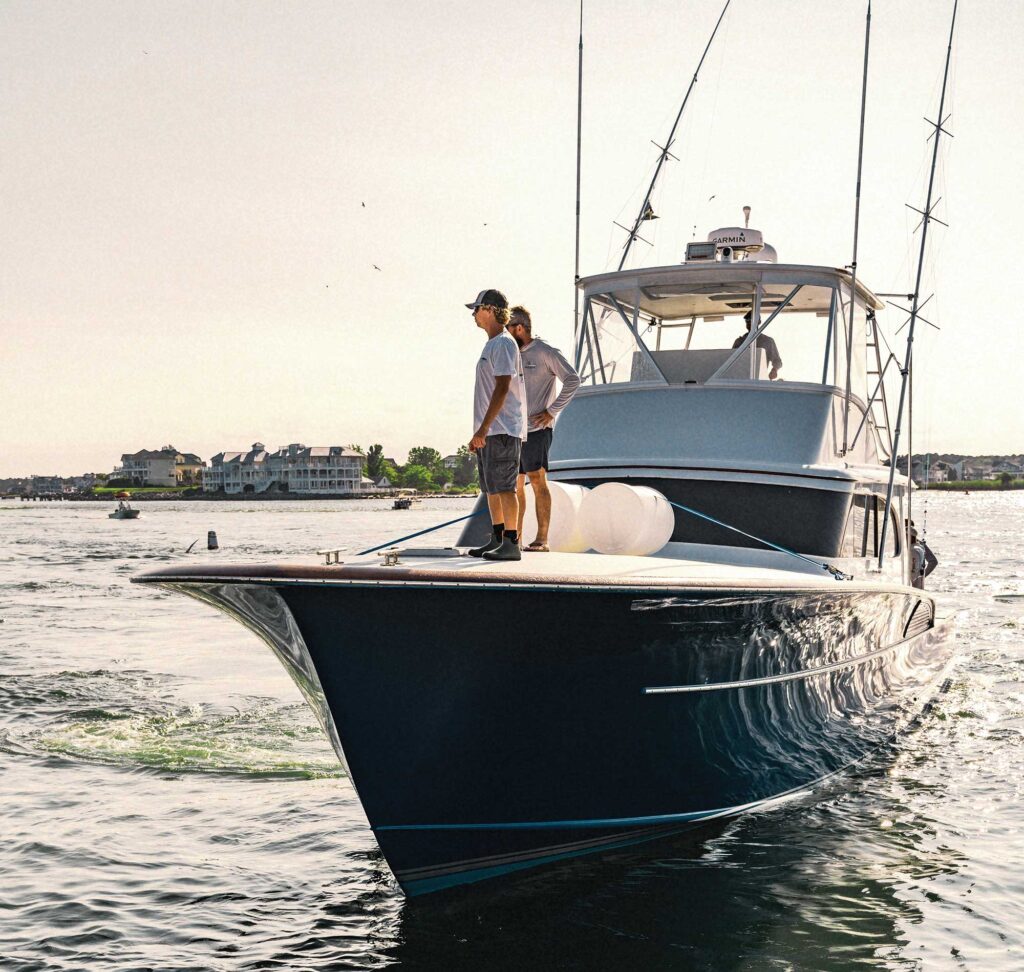 Pulling up to the scale after an overnighter.
Marcus Pyne
Pulling up to the scale after an overnighter.
Marcus Pyne
Only one boat has released 200 billfish in a season. “That was the Billfisher,” Ensor says. “I believe they’ve done it six times.”
Not only does Ocean City host the best white marlin fishing in the world, it’s historically good right now.
The fishing has changed considerably since Duffie’s early days at the Ocean City Fishing Center. These changes are measured not simply in catch rates, but also in tactics and the skill of those involved. “In the early ’90s, catching one white marlin was a good day. Catching three in a day was great. I remember the first day we caught double digits,” Duffie says.
Read Next: Silver Salmon Fishing in Southeast Alaska
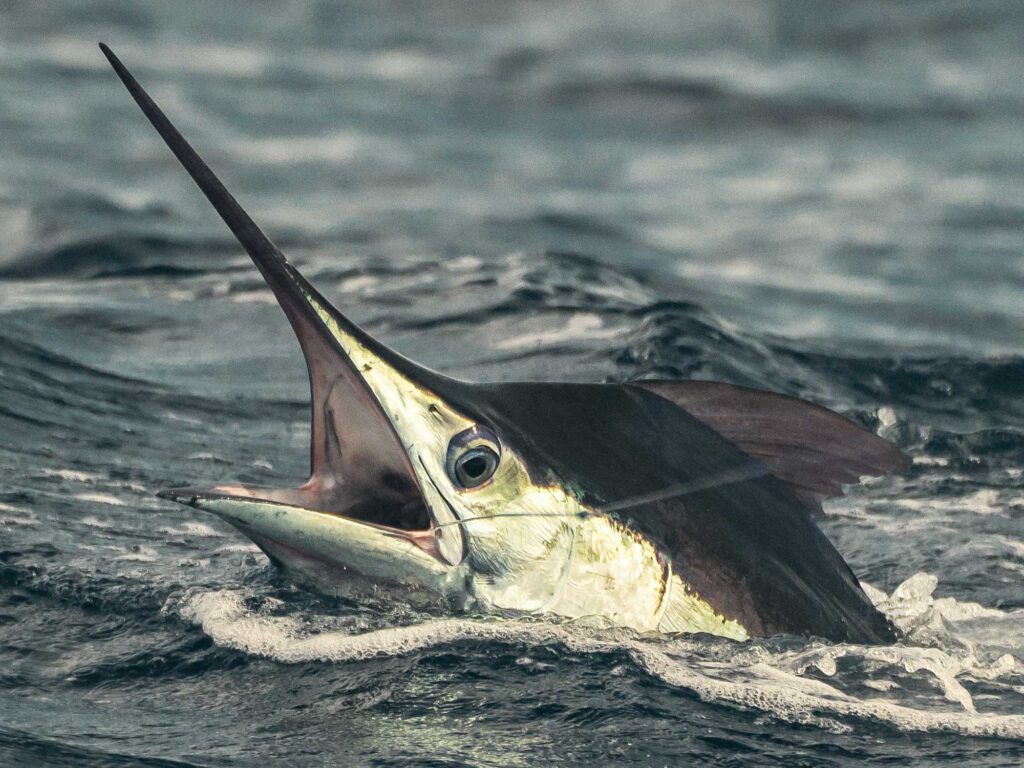 White marlin, the region’s iconic billfish.
Matt Rissell
White marlin, the region’s iconic billfish.
Matt Rissell
The white marlin catch numbers today relate to many of the same factors that have made Ocean City’s influence so prominent. Boats are bigger, faster and have greater ranges, allowing anglers to fish the canyons longer. Tackle and technologies are drastically improved. The interconnectedness of fishing knowledge has improved how teams approach and catch white marlin.
“Compared to today, we used to use such rudimentary tackle—130-pound leader, 9/0 hooks on 30-wides. The dredges we used were six mullet hung off the cleat on a rope with a cigar lead. And that was cutting-edge,” Duffie says with a laugh.
“It was such a different way of fishing. We were white marlin fishing at 5.5 knots. The fish would paddle up and check out all the baits. You know how finicky white marlin can be—they are even more finicky when you are going slow.”
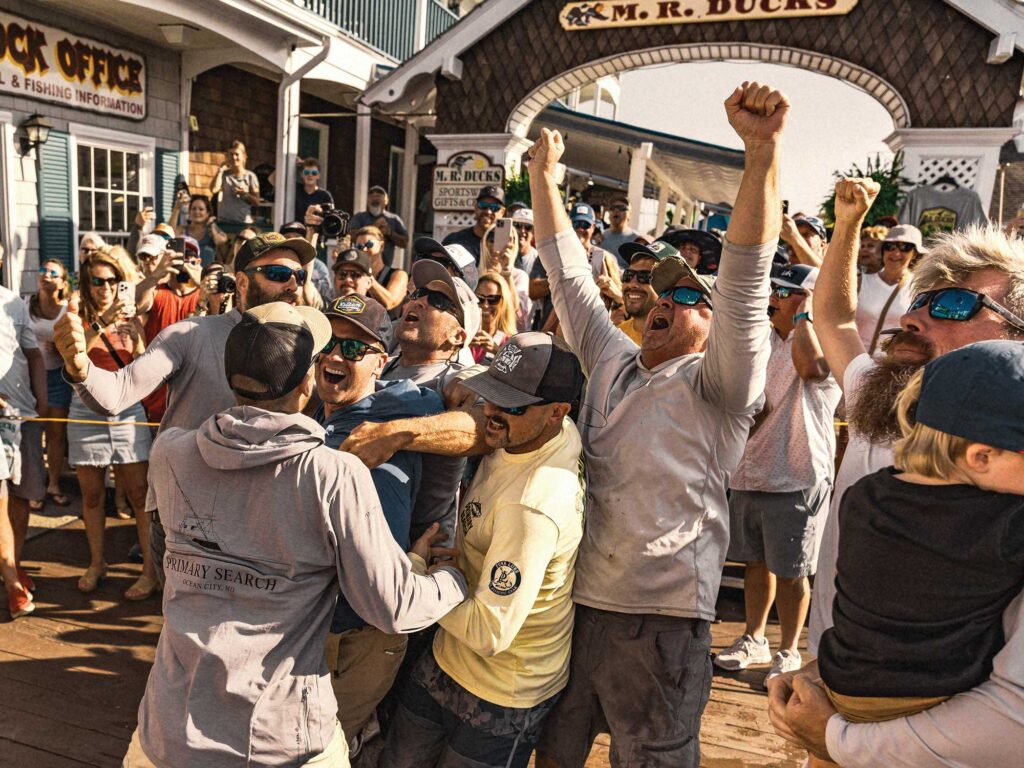 Celebrating at the 2024 Huk Big Fish Classic.
Marcus Pyne
Celebrating at the 2024 Huk Big Fish Classic.
Marcus Pyne
Now they’ve gone lighter and smaller on hooks and leaders. “Circle hooks have done wonders for the fishery,” Duffie says. The dredges of today are a bit different too. Duffie adds that these technical and tactical changes happened because “fishermen have branched out. We’ve traveled to Isla Mujeres, Mexico, Costa Rica, Panama, the Bahamas and the Dominican Republic. We’ve learned how to fish for numbers and applied that knowledge to Ocean City. It has revolutionized the fishing.”
These days, rather than catching three white marlin on a really good day, crews hope to hook three in a single turn. And with captains and anglers having that kind of hope, you can understand how Ocean City’s mystique continues to grow.
The post Ocean City Leads the Way in Tournament Techniques and Tactics appeared first on Salt Water Sportsman.
- Home
- About Us
- Write For Us / Submit Content
- Advertising And Affiliates
- Feeds And Syndication
- Contact Us
- Login
- Privacy
All Rights Reserved. Copyright , Central Coast Communications, Inc.